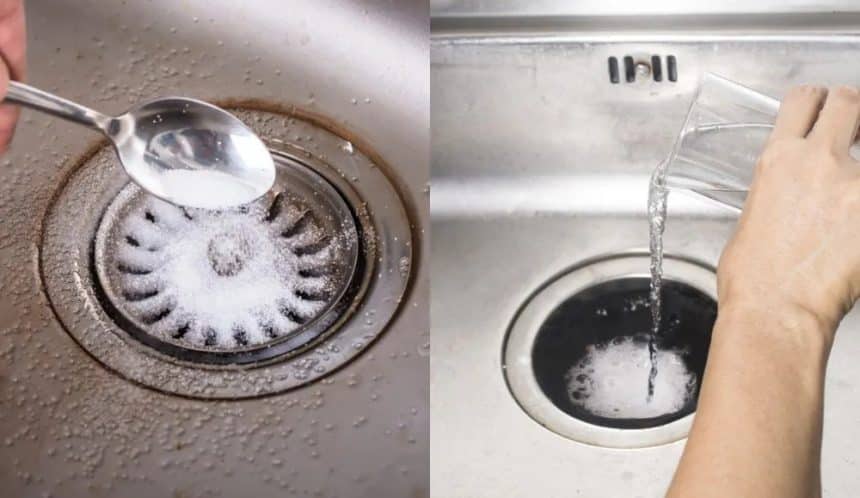While doing the deep cleaning of your house, there is one thing that usually gets missed: drains. Suppose you leave a drain clogged for a long time. It will create bigger problems with your plumbing in the future. Several chemicals available in the market can be used to unclog the drain. These chemicals, though effective, are not safe for your health. Moreover, this will affect the environment by getting drained into the soil and groundwater.
To solve this problem, we bring you one of the most effective and harmless ways to clean your drains. Cleaning drains with baking soda and vinegar has been a proven method for clearing all forms of greasy debris from the drains for ages. The materials are easily available; you just need to follow some easy steps to clean the drains.
In this article, we will be exploring the science behind this method as well as a step-by-step method of cleaning drains with baking soda and vinegar.
How Does the Entire Process Work?

Before we start the process, it is important that you understand how this method works and what makes cleaning drains with baking soda and vinegareffective. The science behind this method lies in the chemical properties of baking soda and vinegar.
- Vinegar – We all know that vinegar, especially white distilled vinegar, is a natural cleaning agent with mild acidic properties. Vinegar does its work by dissolving all the grime and mineral deposits from the drains. The acidic nature of this vinegar makes it an effective solution for cleaning all the residue and removing it from the drains without using any chemicals.
- Baking soda – Sodium bicarbonate, also known as baking soda, is a basic or, you can say, an alkaline compound. It is mildly abrasive and can break down organic matter, which in turn helps in the unclogging process. When an alkaline compound reacts with an acidic compound, they release carbon dioxide gas. The fizz that is created due to this reaction is responsible for breaking down the buildup and washing it away from the drain.
- Reaction – As we know that the chemical reaction between baking soda and vinegar creates carbon dioxide and gas, observe the reaction thoroughly. Vinegar consists of acetic acid, which reacts with the bicarbonate component of baking soda, which forms carbonic acid. This carbolic acid then breaks into water and carbon dioxide. The reaction is fast and produces a characteristic fizzing effect.
The Science Behind Unclogging Drain with Baking Soda and Vinegar
This fizzing dislodges the thick grease, hair, debris, and other stubborn substances which are clogging the drain. The pressure created by the carbon dioxide gas within the drain pipe is what pushes the dislodged debris and grease through the drain.
This clears the blockage effectively. Along with this chemical reaction, the bubbling that occurs by the carbon dioxide gas also loosens the thick grime. The whole reaction’s physical and chemical components break down the organic matter and enhance the effect of cleaning drains using baking soda and vinegar.
Although this method is quite effective in unclogging the drains, you must know that this might not be the case for severe blockages. In a situation like this, you might need professional help or use extra methods to clean the drain. Understanding the science behind any method can help in improving the effectiveness of the method. It also helps you understand the difference between using harsh chemicals and natural methods.
What Will You Need?
Now that you understand the science behind this method let us discuss the materials which you will need for cleaning drains using baking soda and vinegar. Make sure you collect all the materials before starting the process to ensure a smooth and successful result.
1. Baking Soda
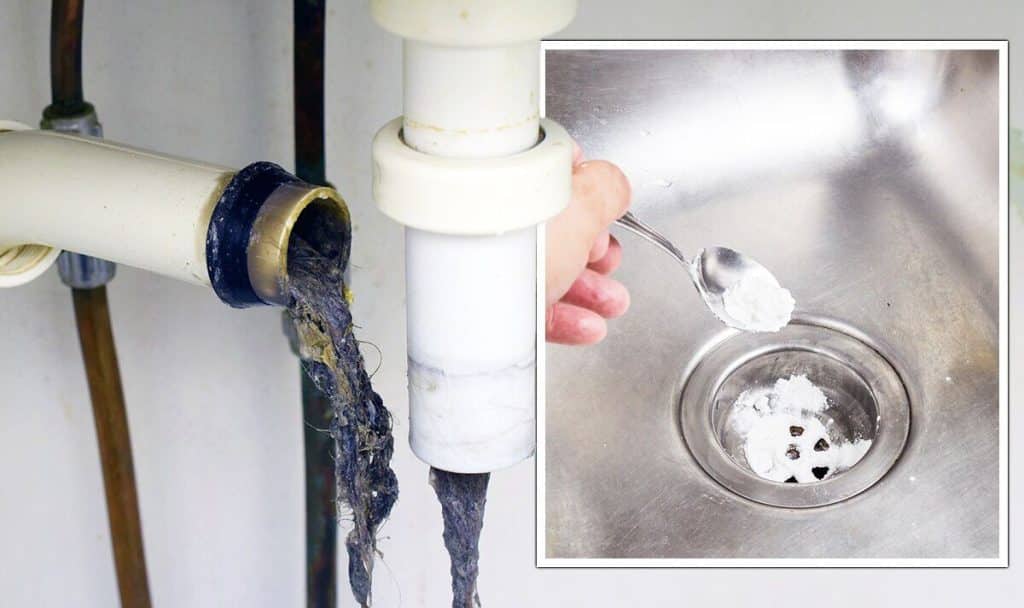
Chemically known as sodium bicarbonate, baking soda is an essential ingredient for this method. It helps get down the organic matter and acts as a mild abrasive agent for removing residues like food particles and hair from the drains. It is one of the main ingredients of this cleaning process. Baking soda also removes odors, thus giving an extra benefit. It is a versatile compound used to clean microwaves and stubborn stains.
2. Vinegar
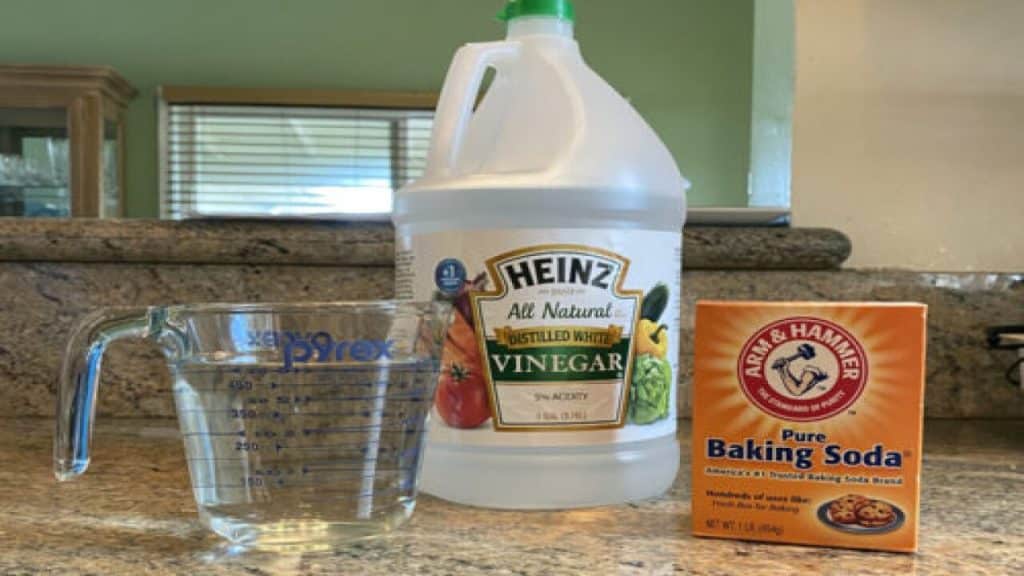
The second most crucial element of this cleaning method is vinegar. It is preferred that you use white distilled vinegar for unclogging drains. A mild acid helps in dissolving greasy residue, mineral deposits, and grime from the clogged drain. Due to its acidic properties, vinegar is extremely effective in removing the buildup and increasing the effectiveness of this method.
3. Boiling Water
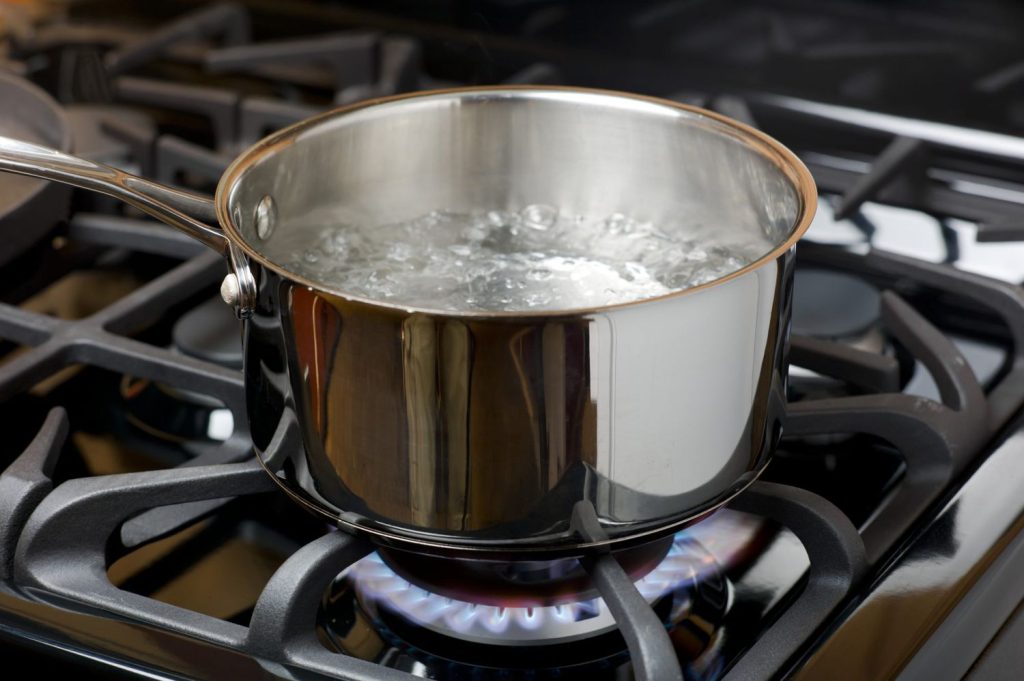
After the main reaction between baking soda and vinegar, it is important to flush out all the debris from the drain. Boiling water acts as a flushing agent after the treatment. It is quite effective in the removal of buildup as well as debris. Make sure that the water is boiling hot when you pour it and not lukewarm. Immediately cover the drain after putting in the hot water. Handle the water carefully so that you don’t hurt yourself.
4. A Pot
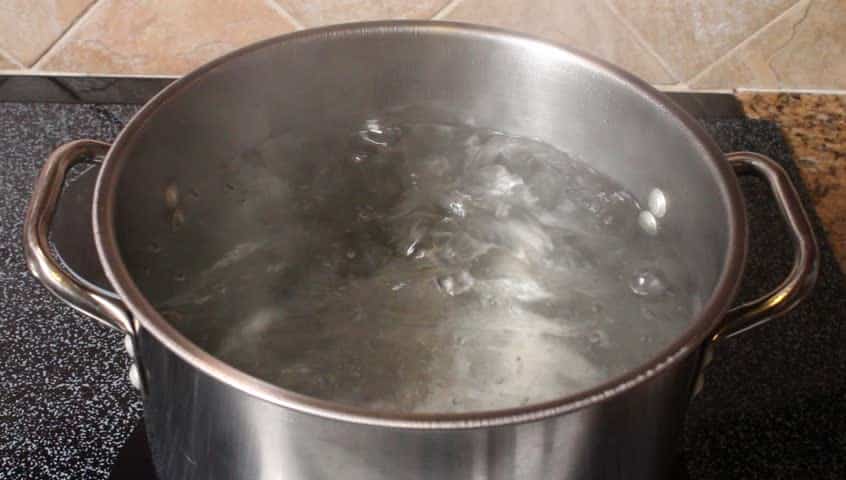
After the main treatment, you will need a pot for boiling water, which is later used as a flushing agent. The reaction between baking soda and vinegar dislodges the buildup, which is then removed by this boiling water. The pot to be used must have proper handles that do not heat up at its sides as it ensures safety. Take a deep pot so the water doesn’t fall off from the top when moved, as it can be dangerous.
5. Measuring Cups
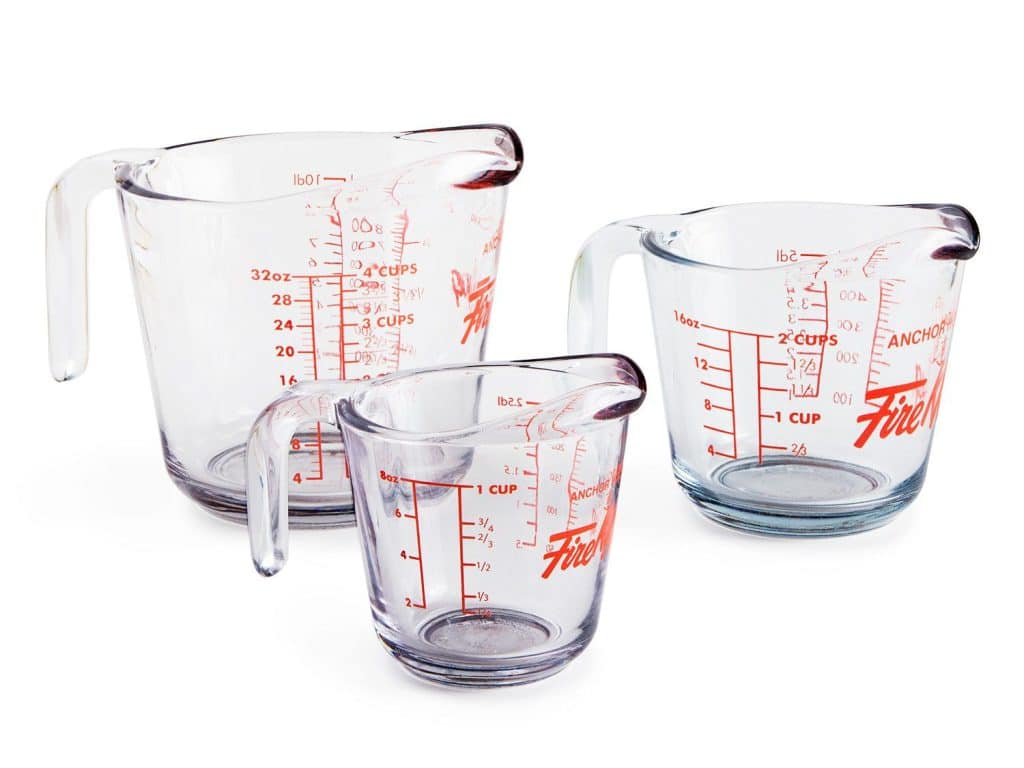
Whether it is a mild or a strong reaction, it is extremely important that you maintain accurate ratios between the chemicals to avoid any accidents. If there is an uneven ratio of the compounds, the reaction might not be successful, or there could be a whole other reaction that is not safe. This alternate reaction can be harmful in many ways. A measuring cup will ensure that you are using appropriate amounts of baking soda and vinegar to unclog the drain. This also helps you in getting optimal results.
6. Rubber Gloves
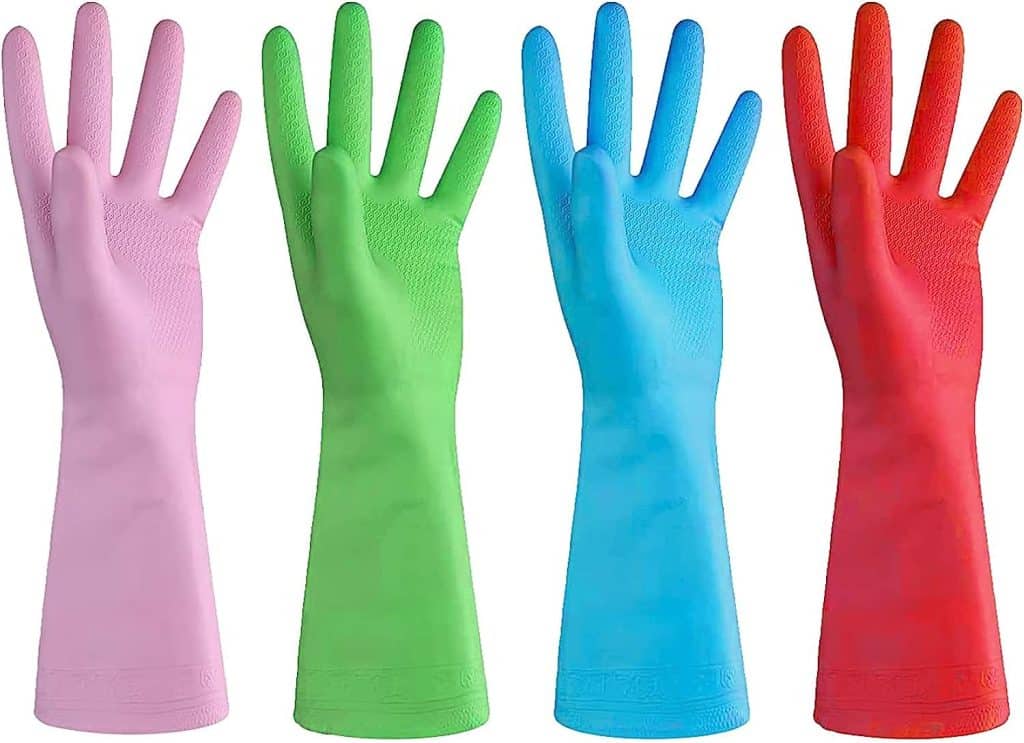
Though it is optional, it’s recommended that you wear protective gear while handling chemicals. If you have sensitive skin, these elements can cause some irritation as they are abrasive. Even after being careful, sometimes we tend to lose our grip and end up hurting ourselves. Using gloves will keep your hand safe from chemicals and make it easier to work with when you handle boiling water. Rubber gloves also add an extra layer of hygiene while cleaning drains using baking soda and vinegar.
7. Plunger
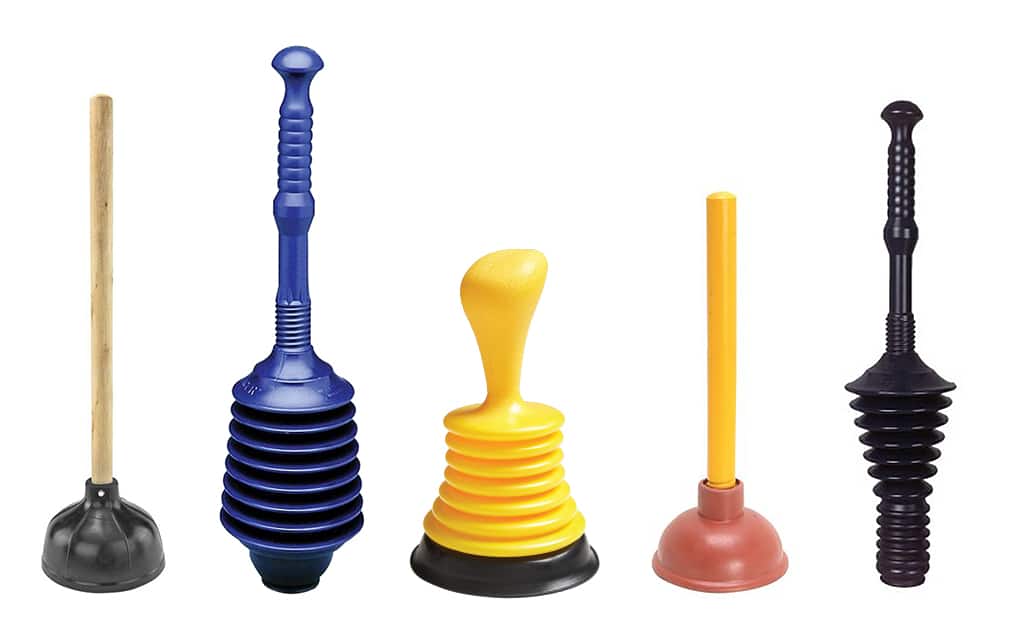
If your clog is stubborn or severe, a plunger can help you clean it out. The extra pressure and suction provided by the plunger will help clear out the blockage more effectively, along with baking soda and vinegar.
Along with cleaning drains using baking soda and vinegar, you can use optional tools like a plunger for more effective cleaning. Remember that these tools are optional, and your clog might not be that severe.
The Blueprint to Unclogging Your Drain
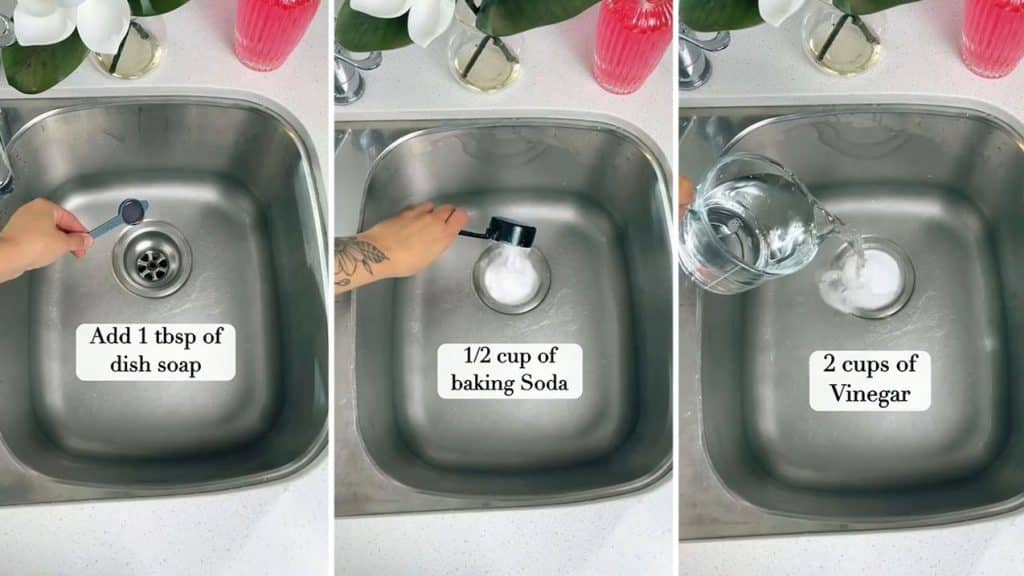
We have learned about the science behind this method and discussed all the materials that need to be collected for unclogging a drain using vinegar and baking soda. It is a natural yet effective method that keeps you as well as the environment safe.
Here are the steps that you need to follow to clean the drain using baking soda and vinegar.
- Remove the Visible Residue: – Before starting the process, if you see any visible debris which can be removed by hand, clean it out. It can be food particles, hair, or any other solid debris. You can use gloves or take a pair of tweezers to remove these debris.
- Keep the Water Boiling: – Take a pot of water and bring it to a boil. This water will be later used to flush out the dislodged residue from the drain.
- Pour the Baking Soda: – Take half a cup of baking soda and slowly pour it down the drain to begin the process of cleaning the train using baking soda and vinegar. Make sure that you are distributing baking soda evenly throughout the drain.
- Pour the Vinegar: – Use double the amount of baking soda, that is, one cup of white distilled vinegar, and slowly pour it down the drain. The reaction will start as soon as you pour the vinegar down the drain, and you can see the fizz. This fizz is responsible for breaking down the buildup.
- Cover It Up: – After pouring the vinegar, immediately cover it with a plug or a cloth. This will not allow the fizz to escape from the drain and will trap inside the pipe. This ensures the effectiveness of the treatment and thorough cleaning of the drain.
- Wait for It: – Let the reaction proceed for up to 30 minutes after covering the drain. When the mixture is sitting in the drain, the chemical reaction will be working on breaking down the organic matter and loosening the clog. This is the most important part of cleaning the drain using baking soda and vinegar.
- Flush It Out: – The pot of water which we had boiled at the start needs to be poured down the drain after 30 minutes of reaction. This hot water will remove all the loosened debris and clear the clog.
- Repeat the Process: – If one reaction cycle is not enough to clean the drain properly, you can repeat the same steps twice or thrice until you are satisfied with the cleaning. You can try using a plunger to dislodge the stubble debris for severe clogs.
Quick Guide to Maintain a Clean and Healthy Drain
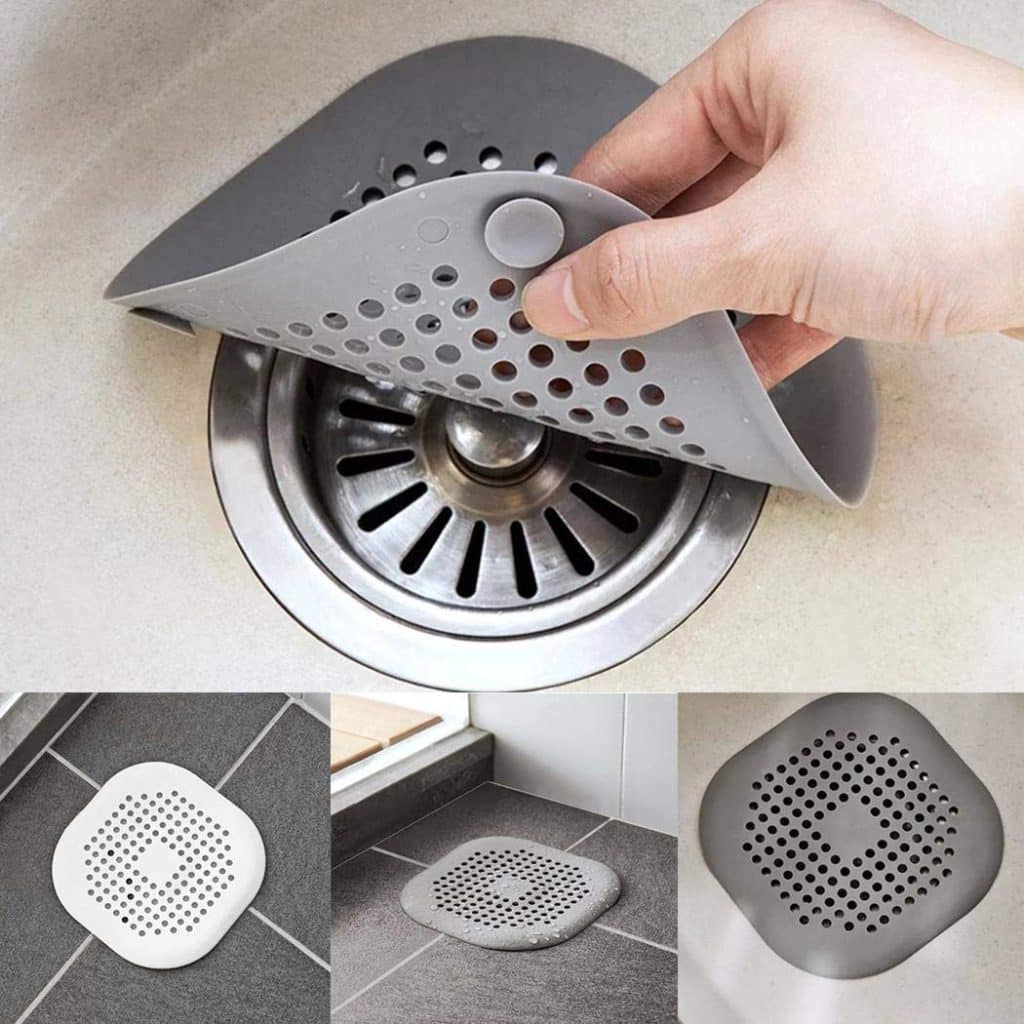
After you have thoroughly cleaned your drain using baking soda and vinegar, it is important that you maintain cleanliness and clean up the drain regularly. Implementing the following preventive measures can reduce the risk of future clogs and maintain an optimal drainage system.
- Remove the Debris Regularly: – Drain covers can catch food particles, hair, or other large substances before they go to the drain pipe. There are several sizes of drain covers available in the market of different sizes and designs which will catch the debris without hampering the water flow. Remove these debris at the end of every day.
- Use Hot Water Flush: – The hot water flush is effective not only during the treatment but also after it. You can pour boiling water down the drain once a week to ensure that there is no larger buildup over time. It prevents the solidifying of grease within the drain.
- Use Vinegar and Baking Soda: – After cleaning the drain using baking soda and vinegar, you can use the same method as maintenance. Even when your drains are not clogged, you can pour this mixture down your drains periodically. Using it as maintenance will require only 10 to 15 minutes of sitting time before the flush with hot water. It will not let any residue accumulate within the drain and block it.
- Don’t Pour Harmful Chemicals: – Grease, oil, and several harsh cleaners tend to accumulate within the drain pipes, thus clogging them. This is why you must not dispose of the leftover oil from cooking down the drain. You can use a separate container to collect this oil and then throw it in the trash.
- Check Periodically: – If you want to maintain a good drainage system, check on all the drains from time to time to ensure no buildup. Also, keep checking for any obstruction in the drain pipes. Always remove the drain cover while you are checking the pipe, and use a flashlight to get a better view. Use a brush or a tool like a plumber’s snake to remove the obstruction. Follow this with a hot water flush.
- Take professional assistance: – If the clogs in your drainage are frequent and persistent, you may need to get help from a professional. These types of drainage blockages cannot be resolved with baking soda and vinegar because this kind of blockage needs special tools and skills to be cleared out.
By incorporating the above-mentioned measures in your routine, you can ensure lesser chances of logs in your drain. Use these simple steps after you have cleaned your drain using baking soda and vinegar to maintain an obstruction-free drainage system. Do not hesitate to seek professional help when needed because clogged drains can cause waterlogging in the infrastructure of your house, thus compromising Its durability.
Conclusion
In conclusion, cleaning a drain with baking soda and vinegar offers a natural and potent method for hassle-free cleaning. It also saves you from harsh chemicals and going through the trouble of calling a plumber. These household ingredients are available in every kitchen, thus making it an economical option as well. The reaction between the baking soda and vinegar is powerful enough to dissolve greasy buildup and restore proper drainage.
This method is effective for cleaning, makes you environmentally conscious, and keeps your family away from harmful chemicals. The alkalinity of baking soda, when combined with the acidity of the vinegar, creates a fizzing reaction that helps break down and dislodge the deposits.
Moreover, follow a routine cleaning of your drains using the maintenance methods like hot water flush, drain covers, and obstruction checks. You can easily maintain the efficacy of your plumbing system. You must seek professional help when needed.
Follow the step-by-step guide in the article and confidently tackle your clogs.

